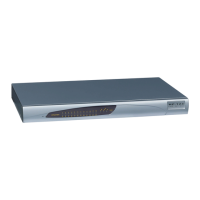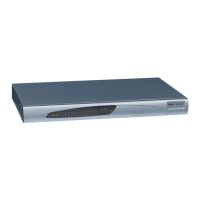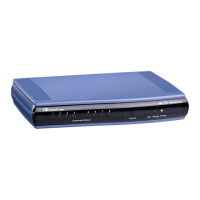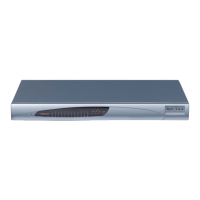Web: Control Premium QoS
EMS: Premium Service Class Control Diff Serv
[PremiumServiceClassControlDiffServ]
Defines the DiffServ value for Premium Control CoS
content (Call Control applications) - only if
ControlIPDiffserv is not set in the selected IP Profile.
The valid range is 0 to 63. The default is 40.
Notes:
The value for the Premium Control DiffServ is
determined by the following (according to
priority):
PremiumServiceClassControlDiffServ.
The same value must be configured for this
parameter and the parameter MLPPDiffServ.
Outgoing calls are tagged according to this
parameter.
Web: Gold QoS
EMS: Gold Service Class Diff Serv
[GoldServiceClassDiffServ]
Defines the DiffServ value for the Gold CoS content
(Streaming applications).
The valid range is 0 to 63. The default is 26.
Web: Bronze QoS
EMS: Bronze Service Class Diff Serv
[BronzeServiceClassDiffServ]
Defines the DiffServ value for the Bronze CoS
content (OAMP applications).
The valid range is 0 to 63. The default is 10.
43.1.5 NAT and STUN Parameters
The Network Address Translation (NAT) and Simple Traversal of UDP through NAT
(STUN) parameters are described in the table below.
Table 43-5: NAT and STUN Parameters
Parameter Description
STUN Parameters
Web: Enable STUN
EMS: STUN Enable
[EnableSTUN]
Enables Simple Traversal of UDP through NATs (STUN).
[0] Disable (default)
[1] Enable
When enabled, the device functions as a STUN client and
communicates with a STUN server located in the public Internet.
STUN is used to discover whether the device is located behind a
NAT and the type of NAT. It is also used to determine the IP
addresses and port numbers that the NAT assigns to outgoing
signaling messages (using SIP) and media streams (using RTP,
RTCP and T.38). STUN works with many existing NAT types and
does not require any special behavior from them.
Notes:
For this parameter to take effect, a device reset is required.
For defining the STUN server domain name, use the parameter
STUNServerDomainName.
For more information on STUN, see Configuring STUN on page
125.

